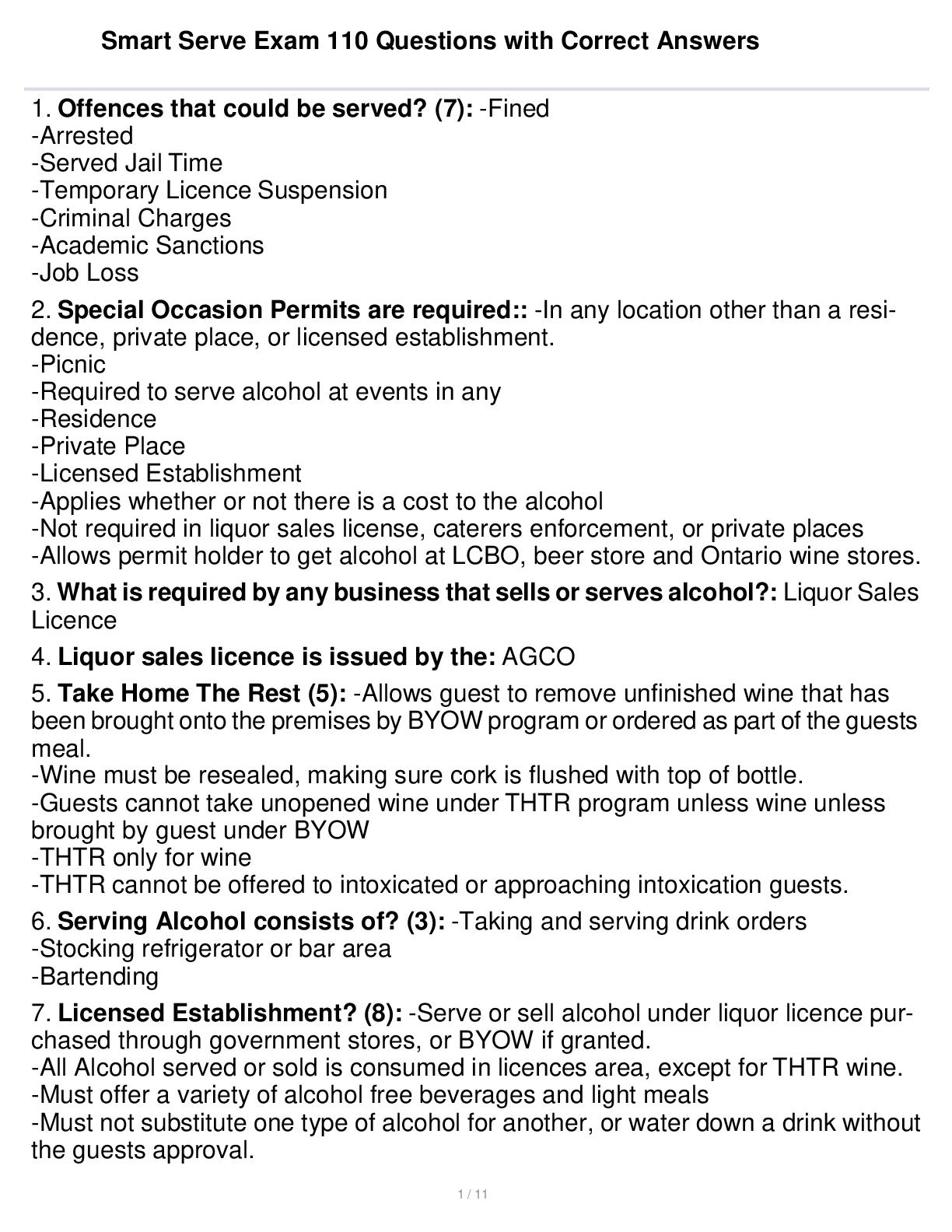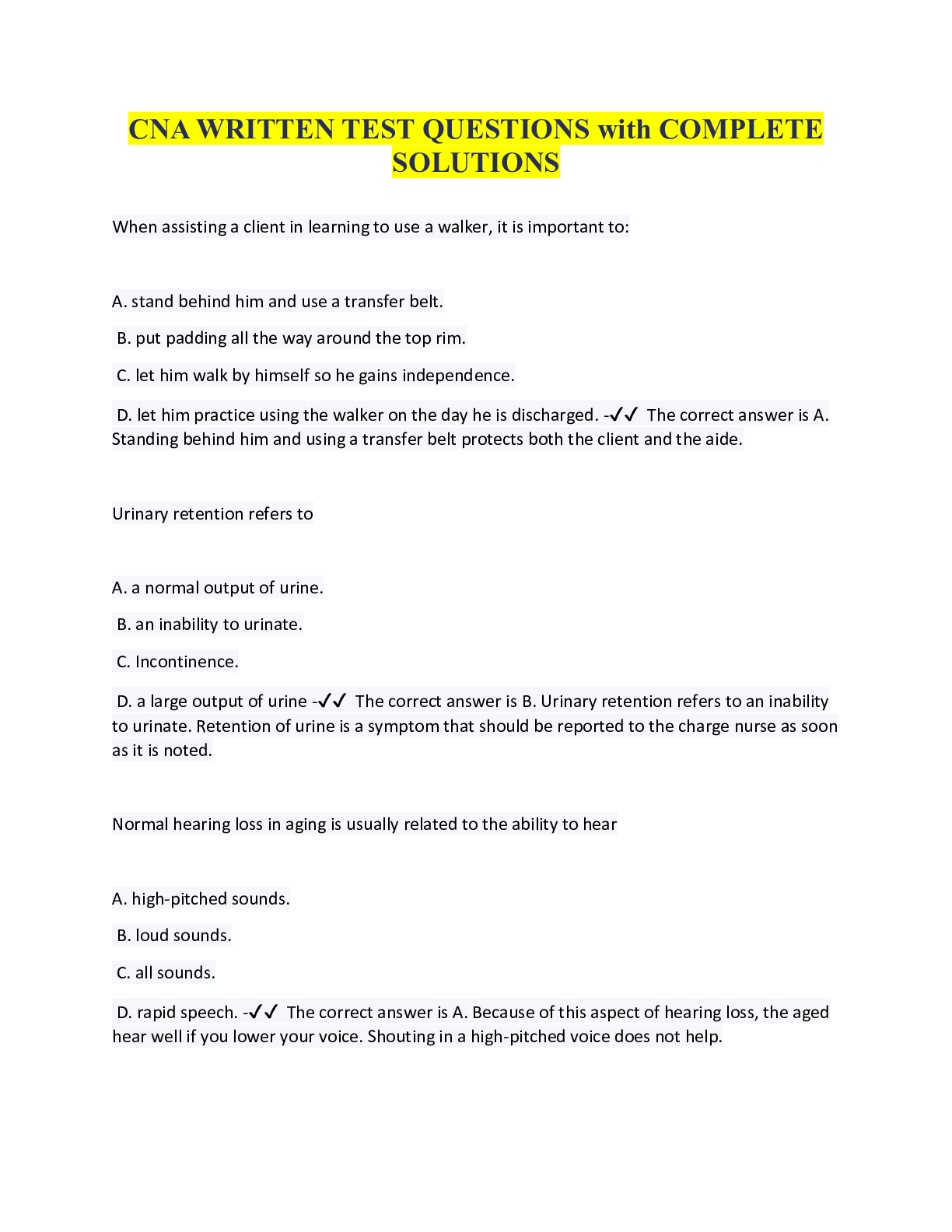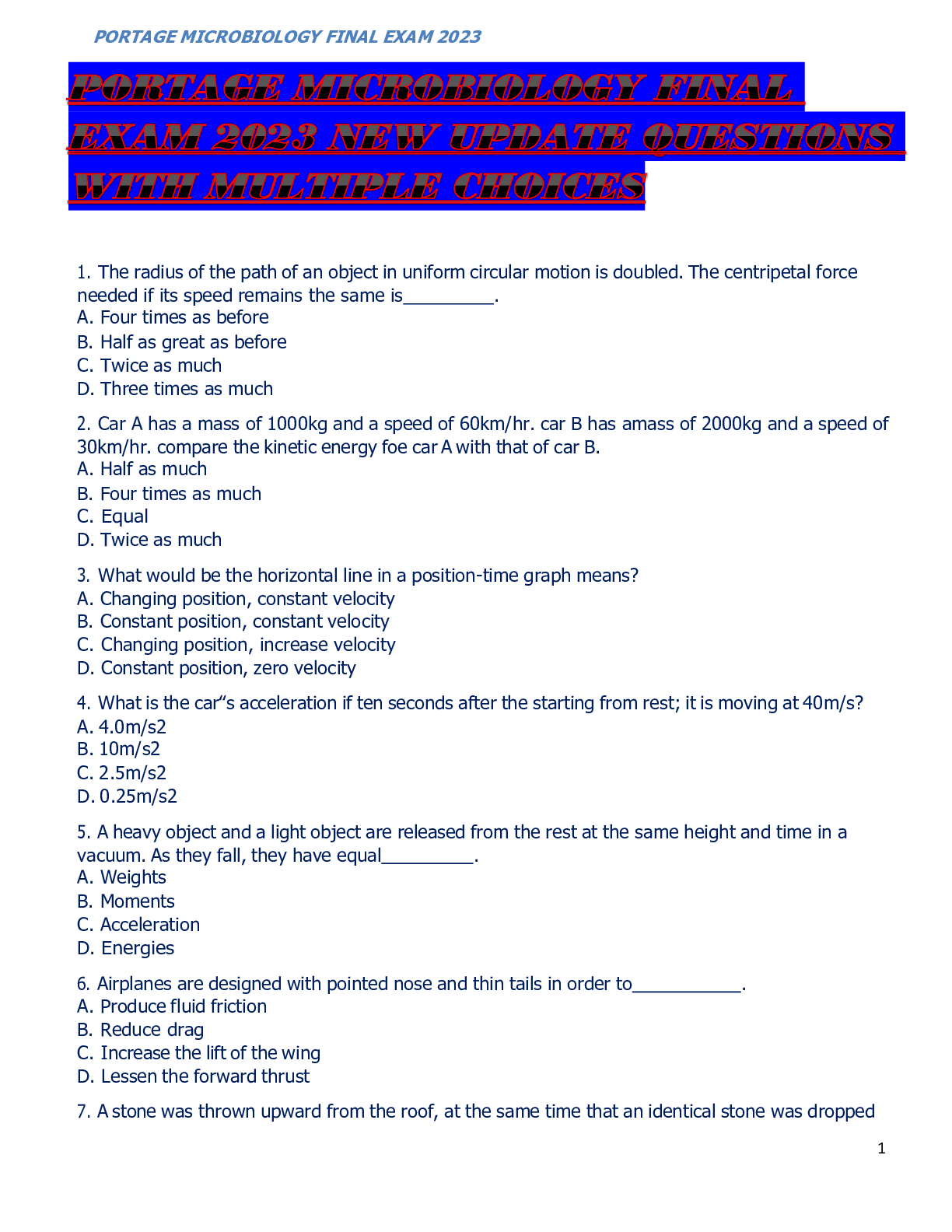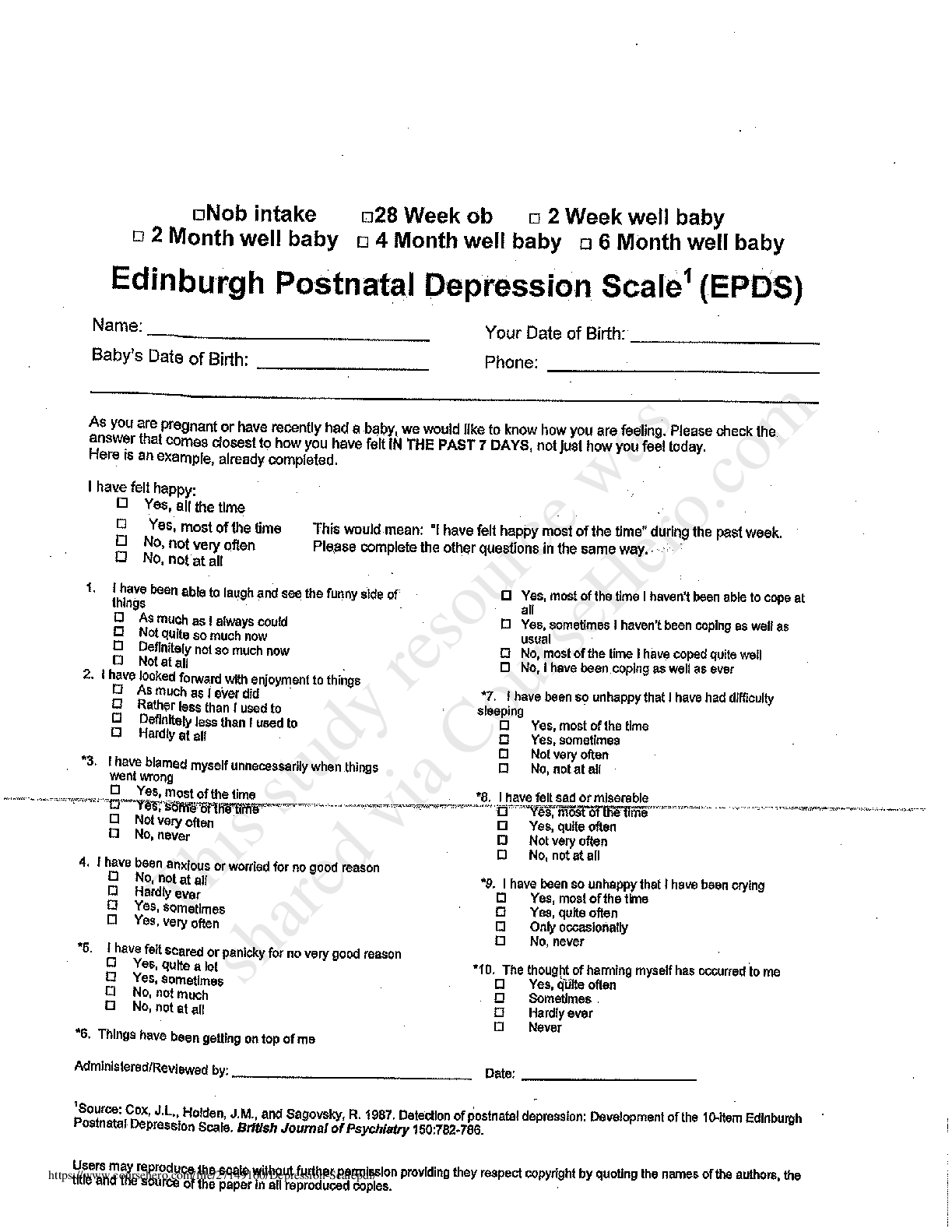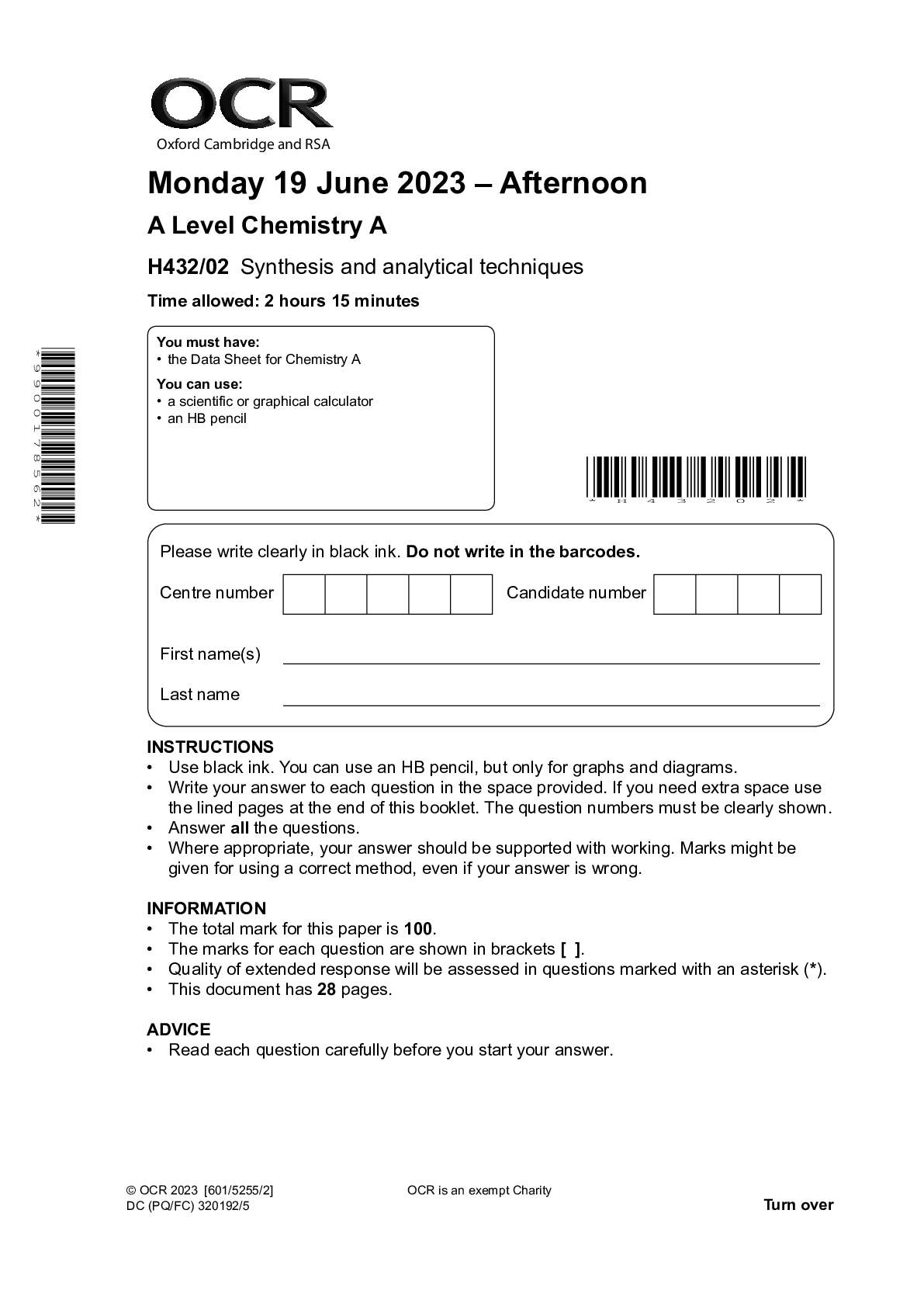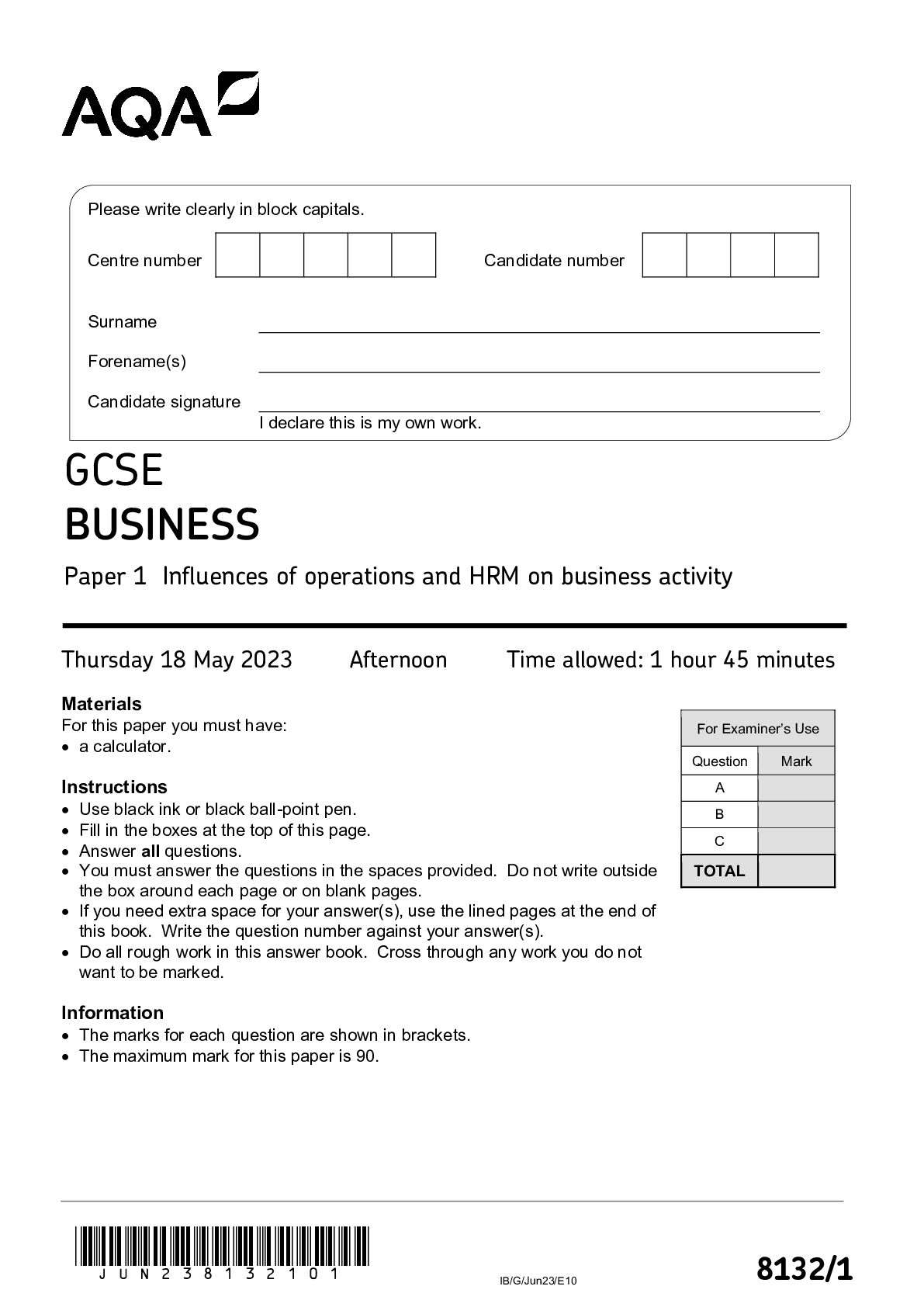Physics > QUESTION PAPER (QP) > Physics paper 2 trilogy homework answer booklet. Questions with accurate answers .99% Approved Pas (All)
Physics paper 2 trilogy homework answer booklet. Questions with accurate answers .99% Approved Pass rate
Document Content and Description Below
How does the speed of a car affect its stopping distance at maximum braking force? Higher speed results in a shorter stopping distance. Higher speed results in a longer stopping distance. The speed... of the car doesn’t matter. 2. A teapot, weighing 10 N, is sat stationary on a table. What is the normal contact force applied to the teapot by the table? 0 N. -10 N. -20 N. 3. Which of these is a typical running speed for a person? 1 m/s. 3 m/s. 12 m/s. 4. When a skydiver opens their parachute, their speed decreases because ... ... the air resistance acting on them increases. ... the air resistance acting on them decreases. ... their weight decreases. 5. Brakes heat up when they are used because energy is transferred from … … the thermal energy stores of the brakes to the kinetic energy stores of the wheels. … the kinetic energy stores of the wheels to the thermal energy stores of the brakes. … the thermal energy stores of the wheels to the kinetic energy stores of the brakes. 6. State Newton’s First Law of motion. An object will remain at rest or will continue with a constant velocity, unless a resultant force acts upon the object. Or if an object is acted on by a resultant force, then the object will be accelerating, which means its speed will be changing or its direction of travel will be changing.3 7. (a) A car travels on a straight road at 17.0 m/s. Calculate the distance travelled by the car in three minutes. Time = 3 minutes = (3 x60s) = 180 seconds Distance = speed x time = 17.0 x 180 Distance = 3,060 m (b) A second car travels on the same road at 20.0 m/s, but it began its journey one minute after the first car from part (a). Calculate the distance between the cars, 2 minutes after the second car began its journey. Time = 2 minutes = (2 x60s) = 120 seconds Distance = speed x time = 20.0 x 120 = 2,400m Difference = 3,060 - 2,400 = 660m Distance between cars = 660 m 8. A cyclist is out for a ride. They warm up for 10 minutes and cover a distance of 3km. They then cycle at a higher speed for 25 minutes covering 12km. They then warm-down for 5 minutes in which they cover a distance of 1,200m. Calculate the cyclist’s average speed for the whole ride. Average speed = Total distance ÷ total time Average speed = (3 km + 12 km + 1,200m) = (3000m+12000m+1200m) = 16,200m Time taken = 10+25+5 = 30mins = (30x60s) = 1,800s Average speed = 16200÷1800 Average speed = 9.0 m/s 9. The speed of light in a vacuum (space) is 3.0 x 108 m/s. Our Sun is 150 million kilometres away from Earth. Calculate the time it takes light to reach us from the Sun, in minutes and seconds. Distance = 150,000,000 km = 150,000,000,000 m Time = distance ÷ speed = 150,000,000,000 ÷ (3.0 x 108) = 500 seconds Time taken = 8 mins 20 secs 10. Two cannons are 1km apart and are aimed at each other. They both fire at exactly the same moment. The shell from the first cannon travels at 250 m/s, but the shell from the second travels at 300 m/s. Calculate the distance from the first cannon to the point where the shells cross and the time that has elapsed after firing. d1 = 1000m - d2, the time taken is the same for both cannon ball so: (d1 ÷250) = ((1000-d1)÷300) => d1 = 454.545 m = 455m (3.s.f) Time taken = 454.545 ÷ 250 = 1.8181s = 1.82 s (3.s.f) Distance from first cannon = 455 m (3.s.f); Time after firing = 1.82 s (3.s.f)4 Homework 2: Forces 1. The acceleration of an object is ... ... the change in height over time. ... the change in distance over time. ... the change in velocity over time. 2. In a closed system, the total momentum after a collision is ... ... the same as the total momentum before the collision. ... always zero. ... greater than the total momentum before the collision. 3. Up to the limit of proportionality, the extension of a stretched spring is ... … directly proportional to the force applied. … inversely proportional to the force applied. … unrelated to the force applied. 4. What is the correct equation that links weight, W, of an object of mass m in a gravitational field strength g? [Show More]
Last updated: 1 year ago
Preview 1 out of 20 pages

Reviews( 0 )
Document information
Connected school, study & course
About the document
Uploaded On
Jun 08, 2022
Number of pages
20
Written in
Additional information
This document has been written for:
Uploaded
Jun 08, 2022
Downloads
0
Views
124



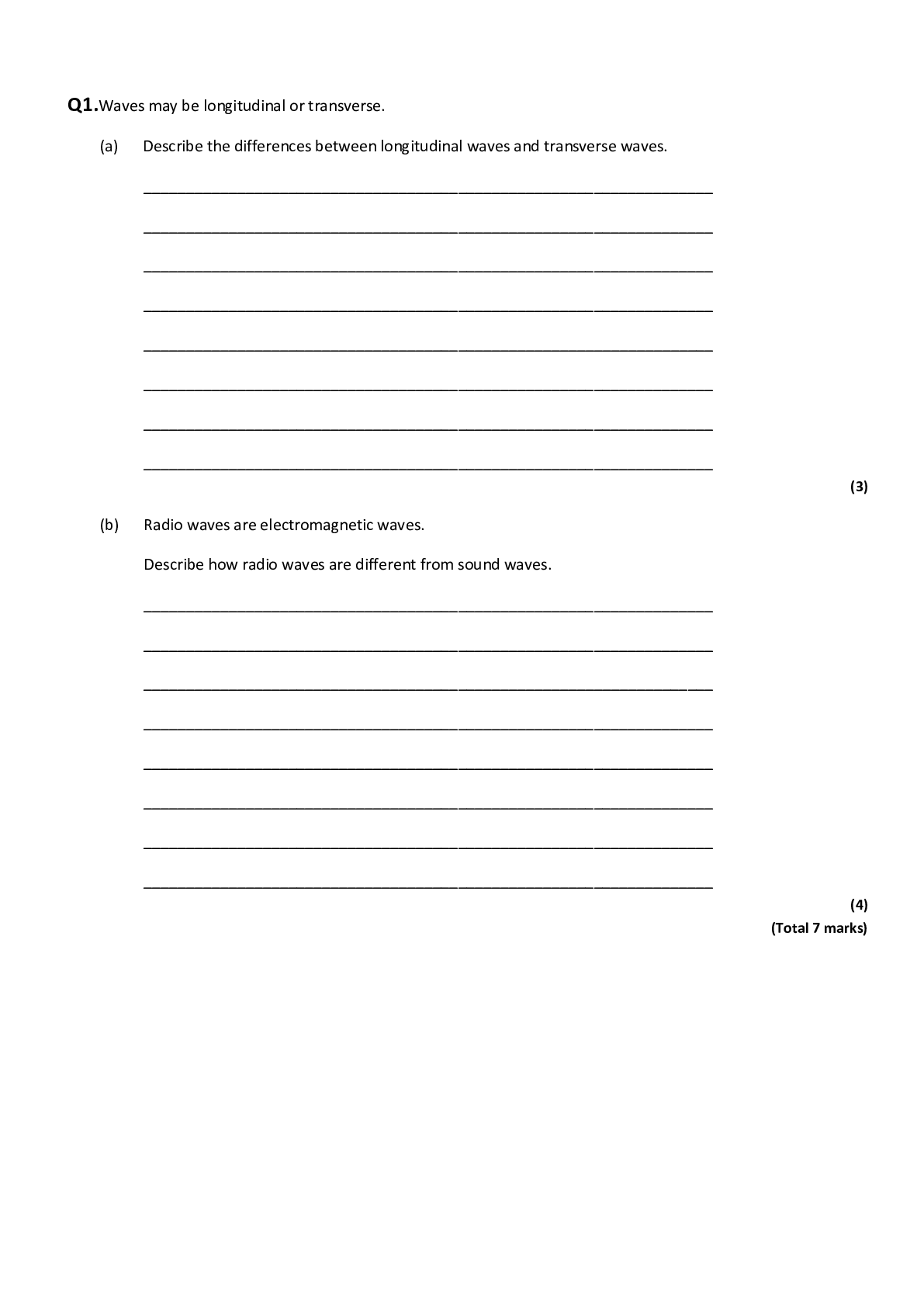




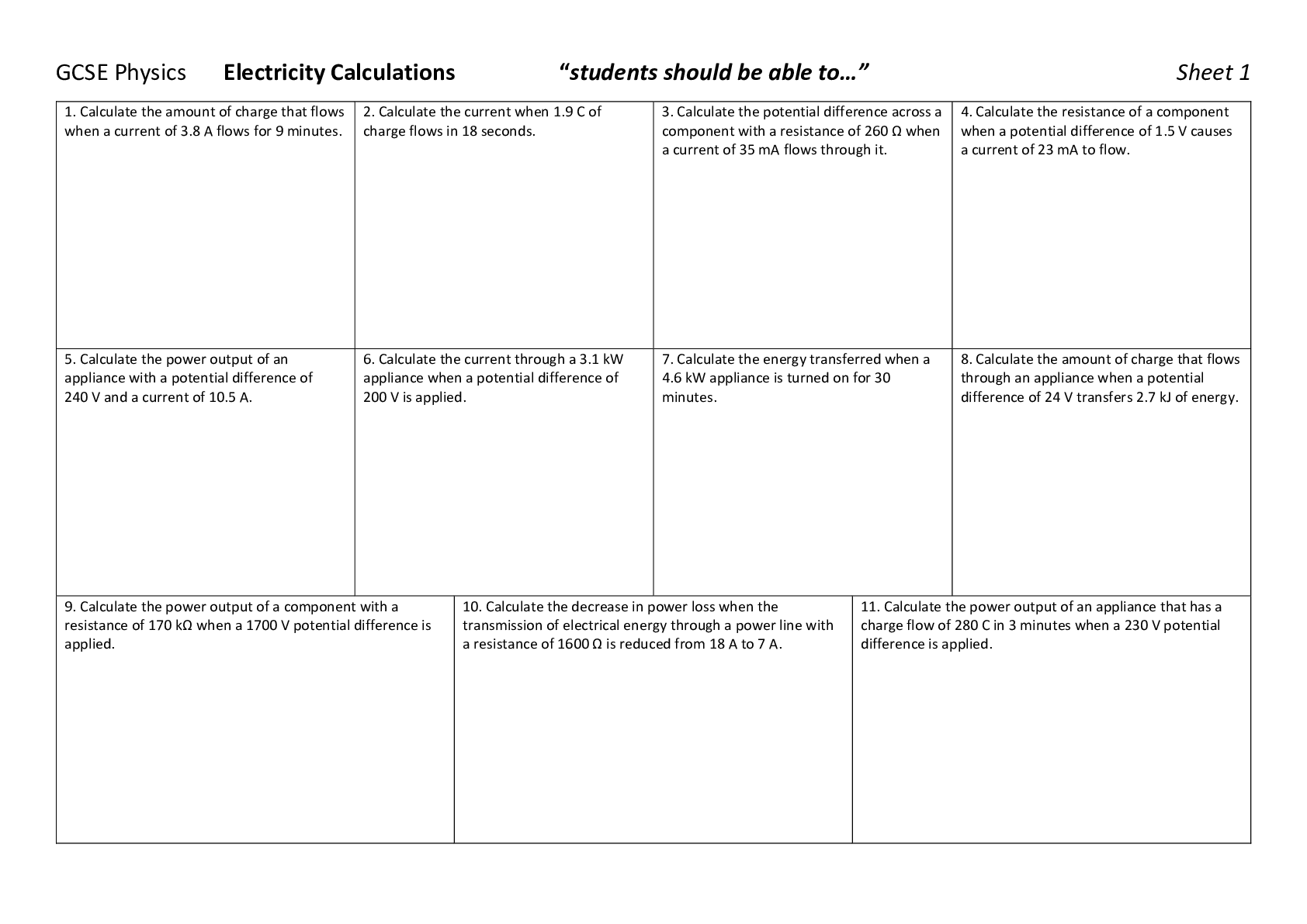
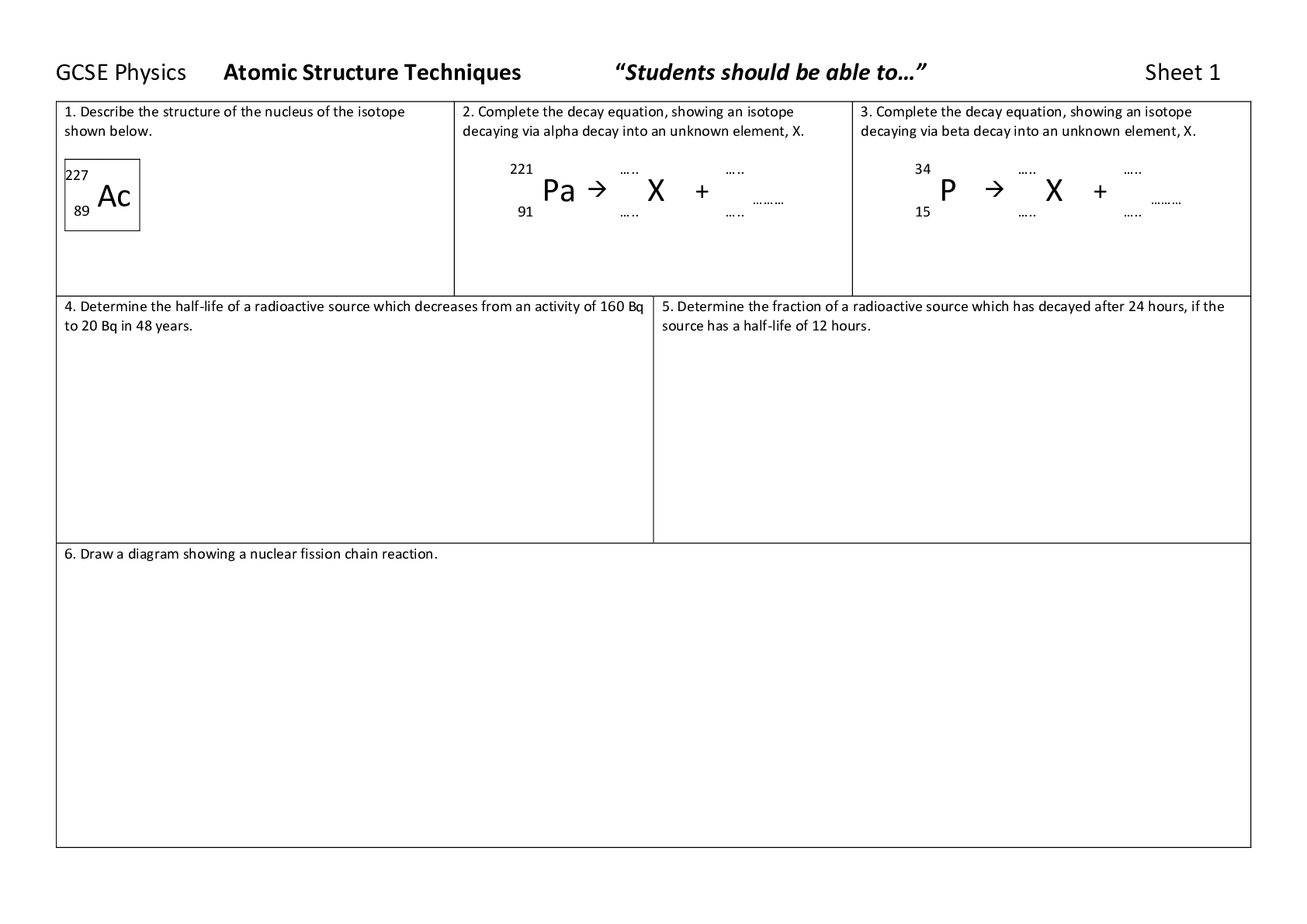
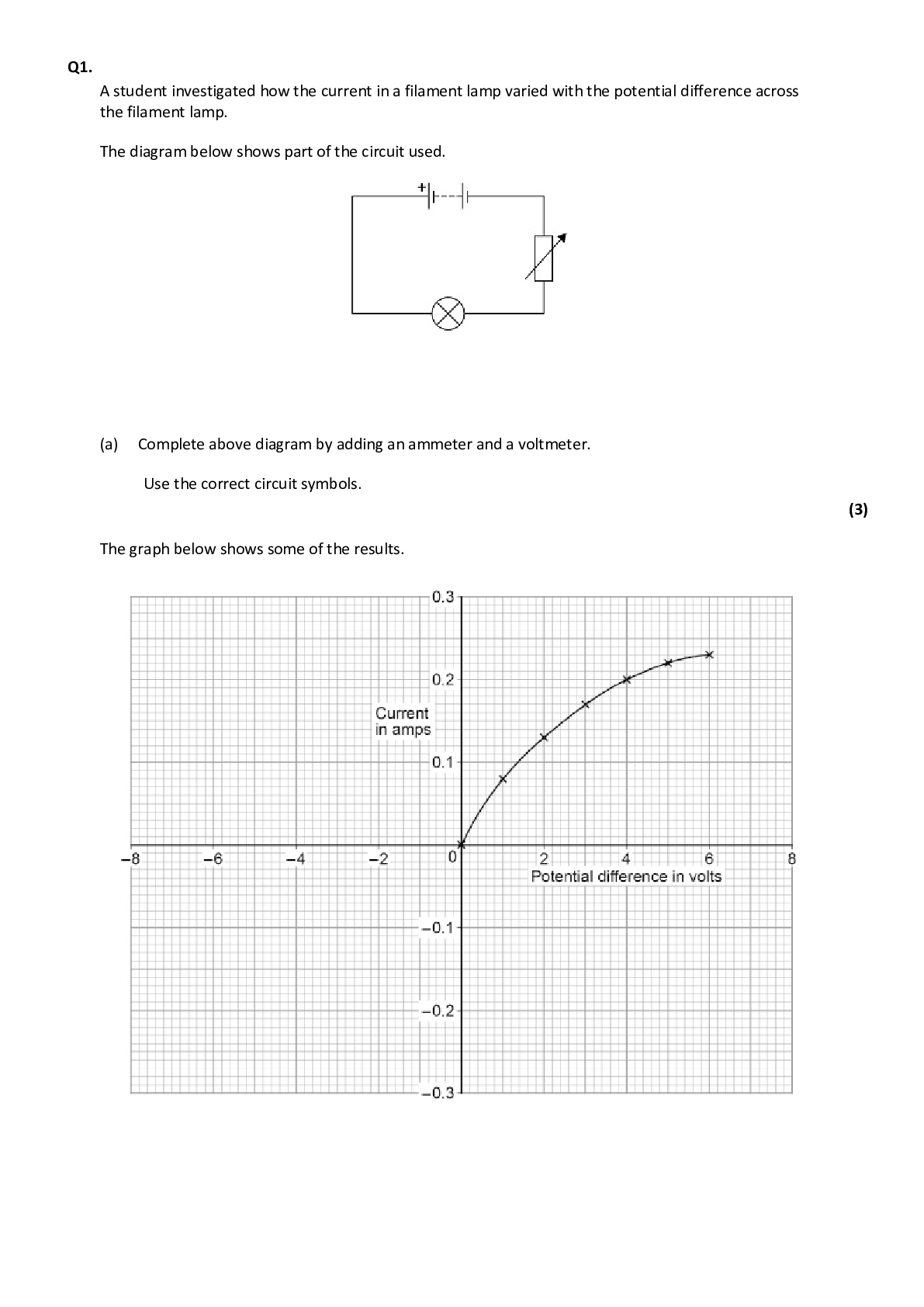

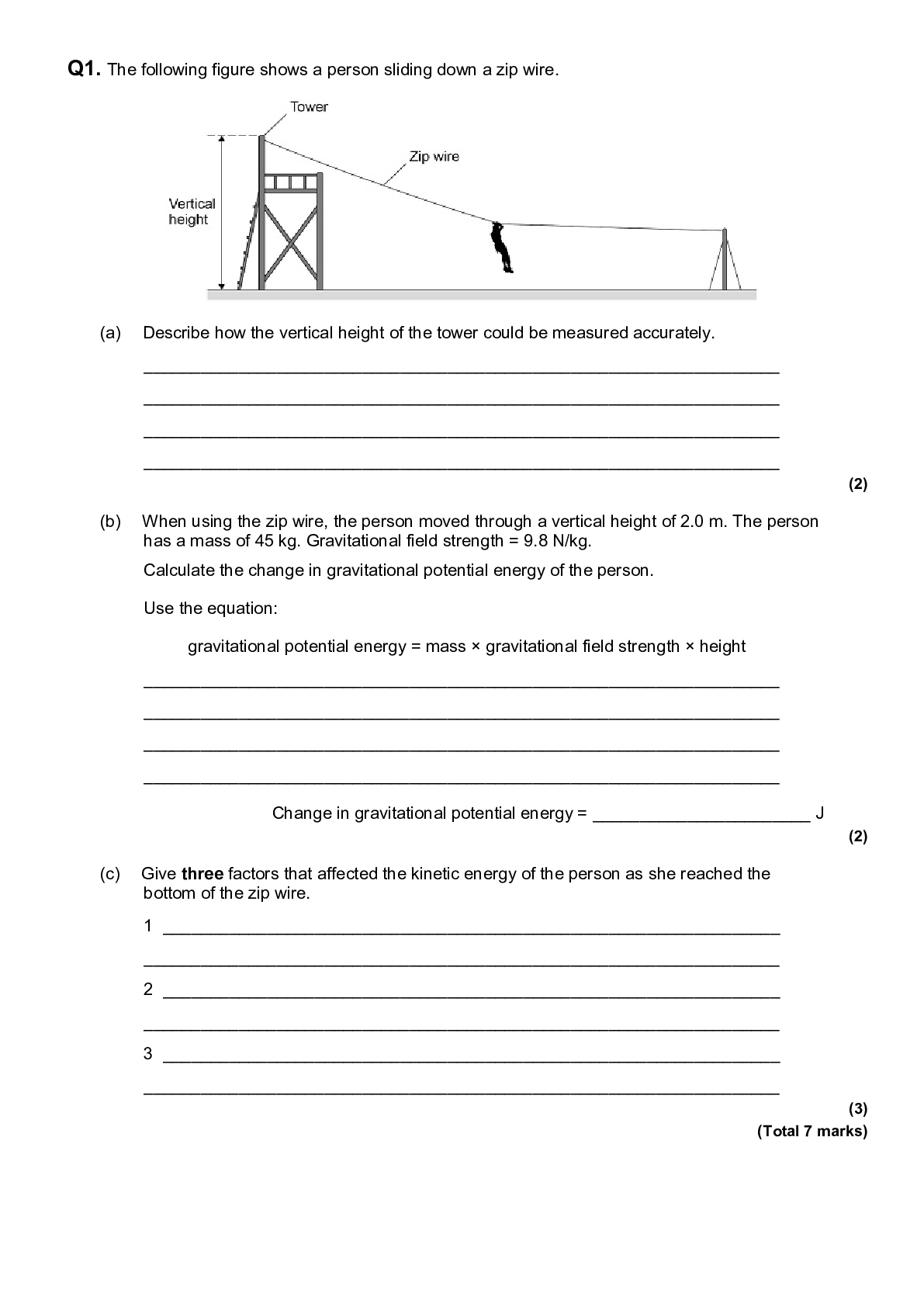
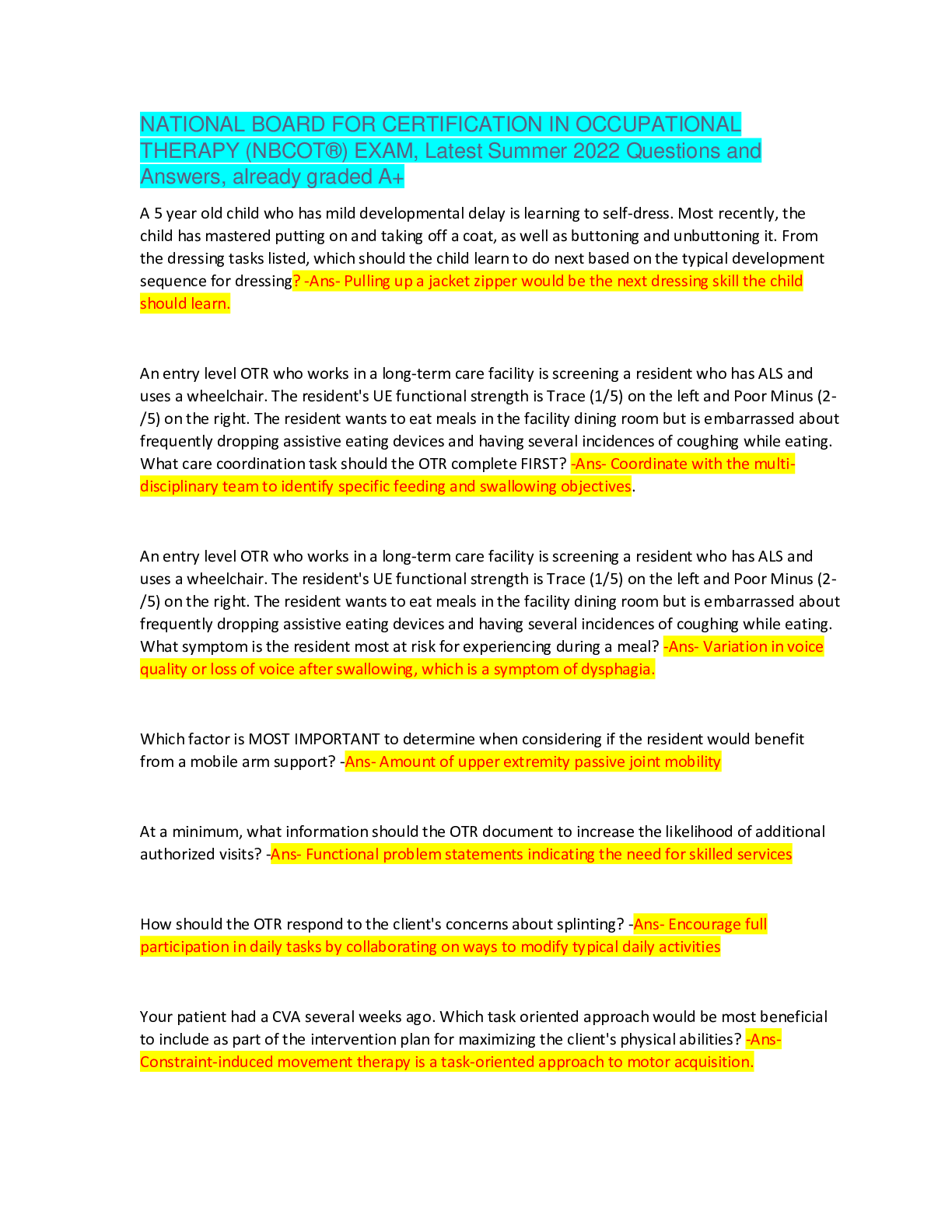
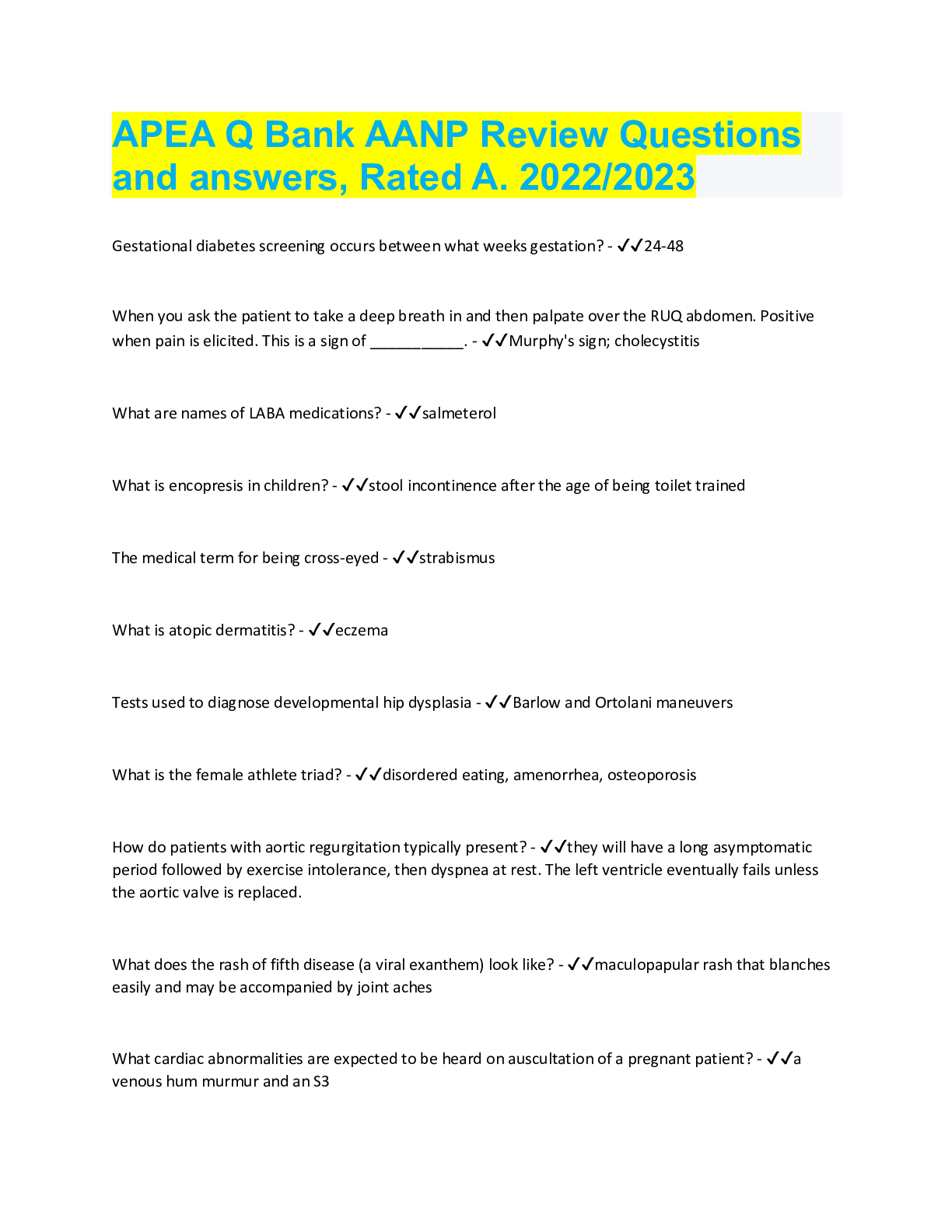

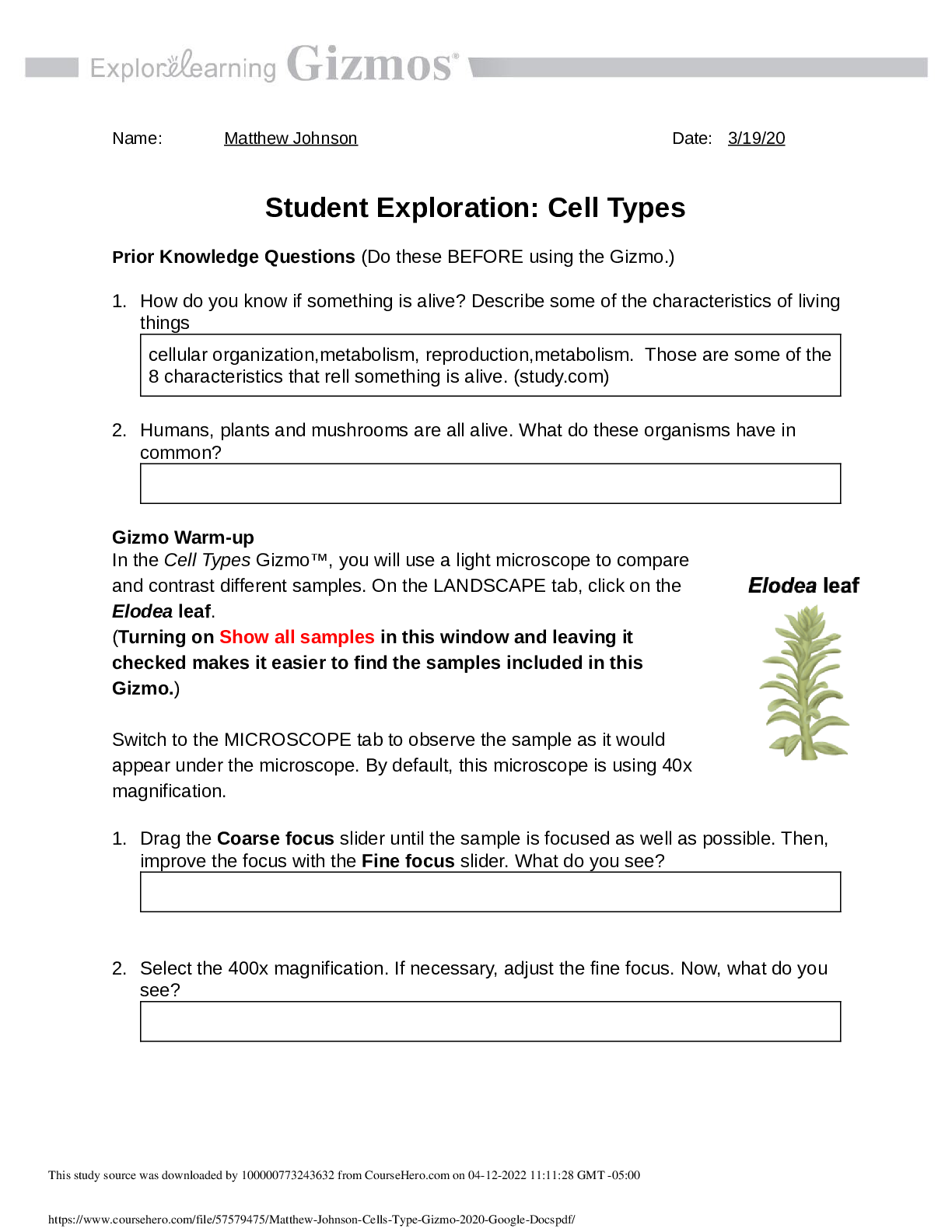
.png)



